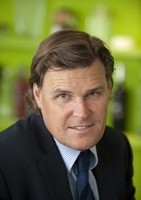European glass sector toasts rising packaging demand

Data from FEVE -– the European Container Glass Federation – show that glass packaging output in the region jumped 4.7% to 10.6m tonnes in the first half of 2011 compared to the same period in 2010.
This provided further proof that the glass industry is getting its message across, trade association president and Ardagh CEO Wall told FoodProductionDaily.com.
Production volumes in France rose by 7.2% to just under 1.7m tonnes while the 1.96m tonnes in Germany represented a 7.1% increase. Italy recorded a 6.4% rise to almost 1.8m tonnes and Turkey’s output soared 15% to 423,000 tonnes. The Spanish industry saw a 1.9% rise to just over 1m tonnes but UK volumes fell by the same amount to 1.1m tonnes.
“The industry has generally seen a recovery to pre-crisis levels and growth is always good,” said Wall. “And in the context of the current crisis they are excellent figures.”
He added that anecdotal data collected by Ardagh suggested rival materials such as rigid packaging and flexible pouches appeared to have been outperformed by glass in the first six months of this year.
“Obviously, at Ardagh we do monitor reports from these companies closely and, anecdotally, growth in rigid plastics and flexible pouches seems to have been fairly flat in H1 2011,” he added.
Growth potential
Wall said he was convinced the glass industry could build on these figures over the next three or four years – based on what he called glass’ position as a premium product and its perceived sustainability benefits.
“The European industry is in a strong place with domestic demand increasing and growth in emerging markets – particularly Latin America – reaching double digits,” he said.
Wall pinpointed energy drinks as an area with huge growth potential as recent figures from Euromonitor International forecast demand for glass packaging in this and the sports drinks segment would see an compound annual growth rate (CAGR) approaching 3% to 2015.
Wall said: “Energy and sports drinks are often premium brands and this fits the profile of glass very well.”
The industry analyst projected similar growth for glass in sauces, juice, wine and canned/preserved food sectors.
The same Euromonitor research also highlighted that glass would experience minimal growth in the carbonated soft drinks and negative growth in dairy over the next three years. Currently, glass supplies between 25-30bn units a year to the carbonated sector and around five billion units into dairy.
“The trend with carbonated soft drinks took place 10 years ago,” said Wall. “While this is still a very important market for glass, consumption is likely to remain flat. I don’t believe any company is anticipating growth in this segment or a wholesale switch back to glass. Growth in glass for this segment will follow only GDP growth.”
The Ardagh chief was upbeat about the prospects for glass – rejecting claims that it would continue to lose market share to rigid plastics and flexible packaging.
“Glass remains one of the reference materials for brands and retailers to deliver high quality foods and drinks to both domestic and export markets because glass brings added value in terms of sustainability and performance,” he said. “While there will not be a wholesale switch to glass there will still be growth.”
Euromonitor analyst Rosemarie Downey said Europe was a hugely important market for glass accounting for 37% of global retail glass packaging demand. Innovative offerings in glass packaging and the consumer trend towards healthy eating was also fuelling glass growth, she said.
“Across the European marketplace, we see glass continuing to answer brand owners’ and consumers’ requirements on both quality and sustainability fronts. Glass is an ideal vehicle for added-value product offerings, where it can and should employ its quality, tradition and heritage attributes to the full,” Downey added.




